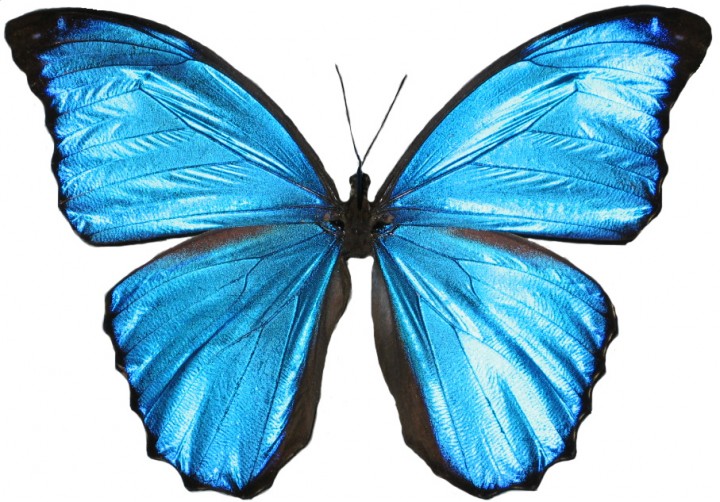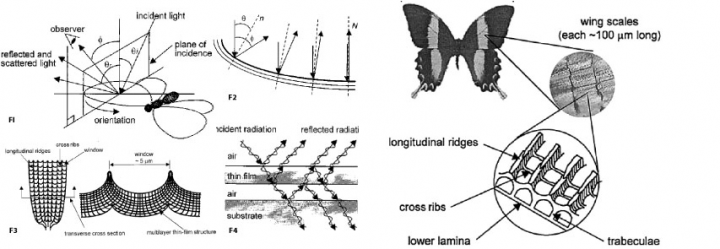Butterfly, Thin-Film Interference


"Parallel layers of a transparent material alternating with layers of a transparent material with a different refractive index (a "thin film") will cause incident light to reflect off of multiple surfaces at once. If the distance between these layers is equal to one-fourth the wavelength of a given color of light, then the multiple reflections will cancel through destructive interference, and no light of that color will be reflected from the stack of layers. If the distance between the layers is one-half that of the wavelength of a given color of light, then the multiple reflections will add up through constructive interference, creating a strong reflection of that color. Color created using constructive interference is often many times brighter than pigmented color. Thus, white light hitting a thin-film will only have a certain color reflected, even though no pigment is used. Color created using thin-film interference can be up to four times brighter when stacks of thin films are involved.
If the distances between layers are unequal, a broader range of color can be reflected; layered stacks can be "quarter-wave", "chirped", or "chaotic". Because the distance a light wave travels between surfaces depends on the angle of incidence and reflection, color from thin-film interference usually depends on the viewing angle, and is thus iridescent. However, if the layers are not parallel (for instance, air bubbles in a transparent matrix), the color may be the same from all viewing angles and will not be iridescent. This is referred to as "coherent scattering" and can be created by arrays of parallel fibers or by arrays of regularly, closely-spaced air bubbles in a matrix." (Biomimicry Institute)
© 2010 Yale University School of Architecture
Recent Comments